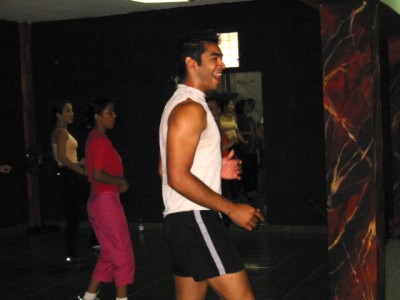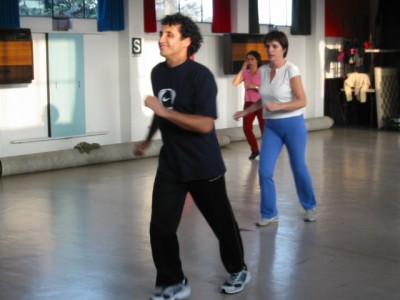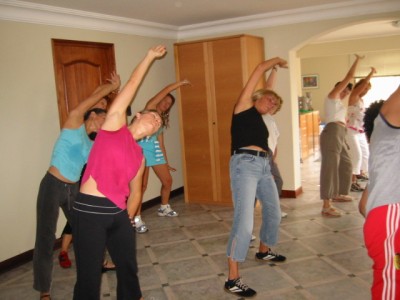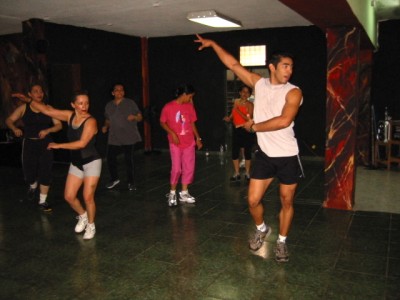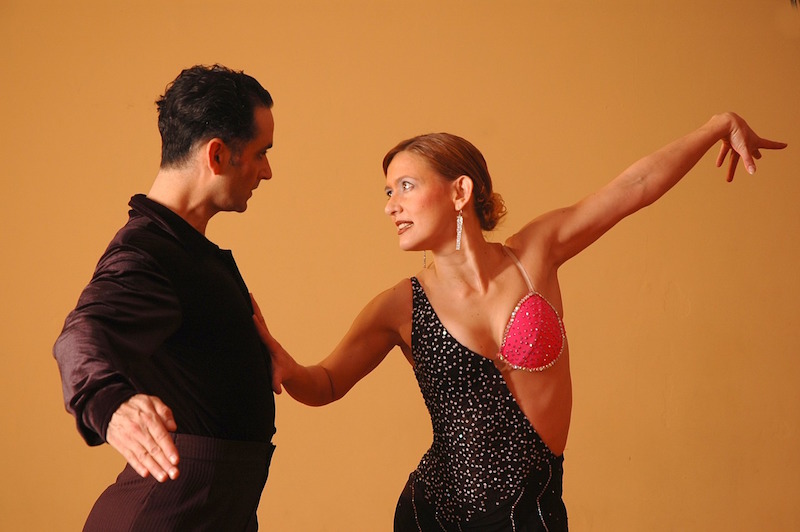
Should you happen to spend some time in Latin America, I warmly suggest you don’t miss taking some dancing classes while you’re there. Latin dance applied to aerobic exercises offers a series of benefits that go from purely physical ones (increased muscle tone, better physical coordination, higher cardiovascular efficiency, as well as burning calories and eliminating toxins) to the psychological ones, even helping liven up your social life (if you so wish). When taught by teachers with lots of experience and a high capacity to communicate, dancing can really be a complete form of sport and in some cases even a sort of anti-stress therapy. In this article I will tell you about my personal experience, and with the help of Alfredo Villanueva, a teacher of Latin dance in Peru, I will also explain the benefits of Latin dance.
When I arrived in Honduras in 1999, I could not move one foot (technically speaking) and dancing had never particularly interested me. I started Latin dancing for two reasons. First, after years in Africa, I was having problems adapting to such a different culture and wanted to get in touch with something that belonged 100% to the local culture. Second, I was looking for a sport that allowed me to exercise without getting bored, since I always hated all routine sports, machines, weights, and all the aerobic exercise ‘military style’ where the trainer screams “one, two, three, four!!!” at full volume.
At the time I lived in Tegucigalpa where there was only one dancing school, THE dancing school, run by an excellent Cuban dancer and his Honduran wife. I joined, with little conviction, but curious to try something new.
The first challenge of dancing was clear in the first three minutes of my initial lesson: not to be ashamed of my lack of ability and physical stiffness. The lesson was like any other aerobic lesson: a hall filled with mirrors, a teacher dancing in front of everyone to Latin rhythms, and the students imitating his movements.
I think I’ll never forget the humiliation I felt trying to follow those apparently simple steps, which the other women in my class mastered perfectly. For one full month, whenever I managed to place a foot in the right place, the others were already three steps ahead. I needed at least two or three months (but even more, on certain rhythms!) to insert the arm movements without completely losing the rhythm with my feet – and as many months again to follow the double step and the one-two-three of salsa. But incredibly, after a few months I had really learnt something! I could do the Merengue, the turns, the main steps of Salsa, and even produce a nice hip movement during Bachata.
I tell everyone who’s willing to try Latin dancing that if I can do it, anyone can do it. But I warn you, what happened to me could happen to you as well: you might never again being able to live without dancing!
Actually dancing is not only a perfect physical exercise, certainly not boring and often very amusing, but it is also a channel to free one’s energy, to socialize, and to have fun in a group. The advantage of Latin dance lessons is that they provide the person with a series of “keys”, of steps, of movements that can be later combined and inserted as one likes on every rhythm, according to the taste and the willingness of every individual.
In Tegucigalpa, after the school of the Cuban teacher had gone through its moment of glory, many other teachers started their own schools, all based on the ideas of the Cuban one, however each with its distinct style and personality. When I left Tegucigalpa, the town was offering quite a number of options to dance Latin rhythms. Dancing had also become a constant point in my social life.
In Lima it took me one year of in-depth searching before finding the ideal solution to continue dancing in an entertaining and sociable way. Peru, amongst the countries of the South America, is considered as one of those where Salsa dancing is enjoyed by a large part of the population. However, I found that for those coming from abroad it is not easy to find the “right” places to go. For one year I visited gyms, dancing schools and the like, looking for good teachers and for methods similar to those I was accustomed to in Tegus. It was only when I found the right teacher and a good Cuban club where I could dance Salsa with my friends that I could get my ‘fix’ to my Latin dancing addiction! I wish everyone could have such a lucky experience as I did.
Let us now take a look at the methods and benefits of dancing:
Structure and organization of the lessons (this is how they are given here in Lima, but it’s not different from lessons I took in Honduras):
Group lessons where various dancing style are practiced, divided into single choreographies for every theme. The main styles are salsa, merengue, cumbia, bayenato, hip hop, reggae, plus the local rhythms that belong to the various countries (in Honduras it was the “punta”, the dance of the Garifuna, here it’s the black rhythms of Peru). Lessons last 55 minutes, and besides the dancing time is often made for muscle strengthening exercises. A good teacher is able to amuse the students while having them practice quite intensely. The lesson goes through various steps and is based on aerobic exercise, without neglecting any aspect: warming up, stretching, an aerobic part with sufficient time to recuperate, slowing down of the rhythm and finally localized toning exercises.
A good teacher starts every lesson with simple rhythms in order to gain some time to assess the average level of the group: the first song must contain some basic steps to give the teacher the possibility to “test” the students, and then suggest dances that are adequate to their level. A too easy lesson can be boring, but steps which are too complicated for the students to follow can demotivate a group.
Physical benefits
- Dancing requires much energy, therefore helps burn calories.
- Muscular work is seemingly easy yet is in fact very intense, and renders the body more harmonic and firm.
- Moving at a musical rhythm increases coordination and helps acquire harmony and flexibility.
- Since movements in dancing are “mixed”, one has the double advantage of improving the efficiency of heart and lungs, while working at the same time on muscular tone and increasing the resilience of creaky joints.
- Dancing helps you become more conscious of your own body, thus moving with increased lightness while maintaining a correct posture.
- It is a very good and extremely natural way to exercise memory, since at least in the initial learning phase, you must concentrate a lot to remember the various steps and sequences.
Psychological benefits
Latin dance is really enjoyable. If you avoid listening to some of the texts which can be hard to digest, once a certain familiarity with the steps has been acquired anyone can really have fun. If you overcome any lingering embarrassment because you are convinced that you’re unable to move graciously, and just let yourself be led by the music, the group lesson can become a real joy, and can help in relaxing completely. In this sense dancing is a very good anti-stress therapy, a moment of one’s own when a person can release tensions, worries, and negative feelings. Dancing also helps overcoming shyness and realizing that you are able to reproduce steps that seem so hard at the beginning is a boost in self-esteem: the body unblocks, relaxes, movements become lighter and more athletic.
Benefits from a social point of view
Latin dance is a very effective method for developing new social relationships. Generally, if the group of students is always the same, a natural understanding develops over time, based on the fact of exercising together but also and especially an instinctive way to communicate with the body language. Dancing is actually also a way to express feelings, emotions, personality, thoughts, and is consequently a very direct instrument to start new relations. If the group is harmonic, it often happens that people decide to go out together to a disco or another place apart from the dancing school, and these outings allow personal relationships to develop. In Latin America, moreover, dancing is a basic factor in various social occasions: learning some easy steps can only help your integration and involvement in the local culture.
Learning how to dance in Lima
Alfredo Villanueva is a very good teacher and dances all styles perfectly. He created his own dancing method, called Alfredo Villanueva Baileventos.
There is a salsa school at the Club Cohiba. Lessons are given by Roberto Garcet Castro every Thursday night. Cohiba is located in Av. Ejército 681, Miraflores, tel. 4226110
Learning how to dance in Tegucigalpa
Escuela de Baile Chepe: managed by a young garifuna lad, very good dancer and teacher. Specialized in salsa and punta. You can contact José Mena by mail: chepemena@yahoo.com
Latin dance lessons are also given at the Cybex Sport Center, where – amongst other – there is also a very nice swimming pool.

